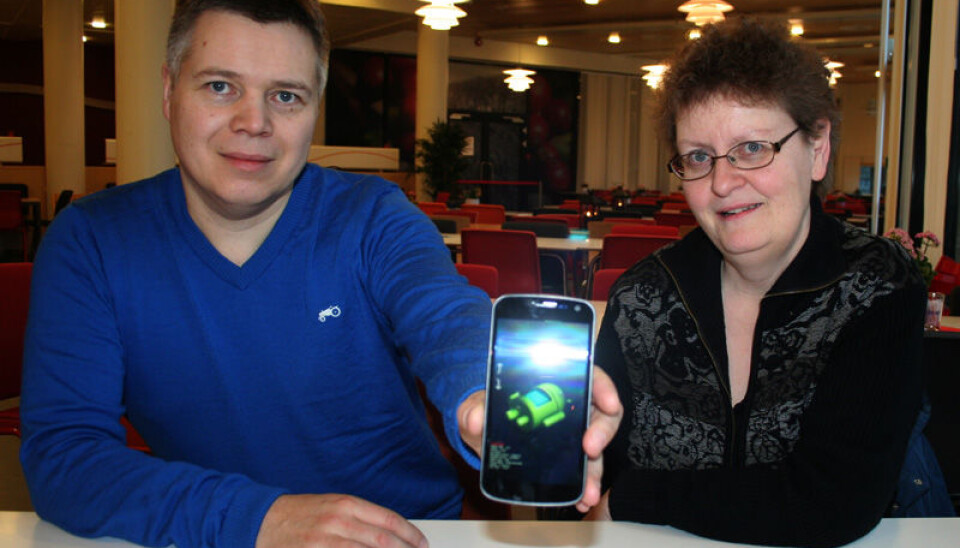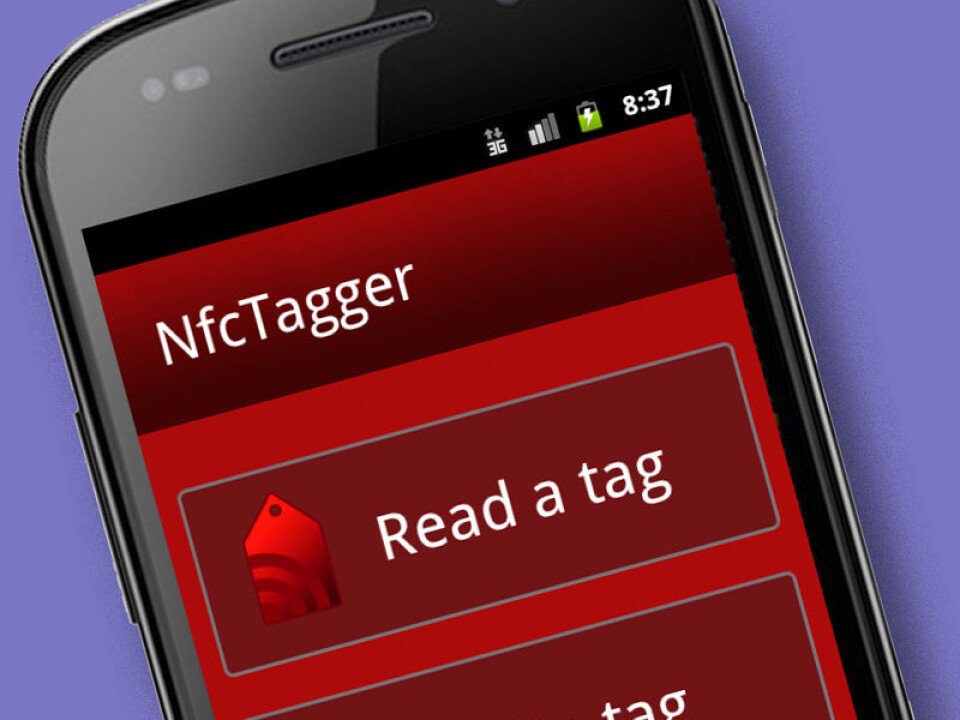
Mobile taggers
Somebody is tagging. Not with spray-paint, mind you, but with microchips. Cell phones are learning to listen, talk and pay at a short distance.
Denne artikkelen er over ti år gammel og kan inneholde utdatert informasjon.
They don’t look like your run-of-the-mill taggers. But Randi Karlsen and Anders Andersen are going to leave their marks on the city of Tromsø in North Norway.
With ample help from students at the University of Tromsø’s Department of Computer Sciences, they’ve devised apps for smart phones that utilize new near field communication (NFC) technology.
Close encounters
This feature only works in close proximity, less than four centimetres. Offhand this might sound like a serious disadvantage for a phone. But the short distance actually opens up a wide array of possibilities.
“The close proximity allows users better control. For instance, you can easily decide who you want to communicate with by holding your phones close enough together,” says Andersen.

“This also promotes security. Others can’t easily influence or monitor the communication,” adds Karlsen.
That quickly summarizes what the new technology is about: Exclusivity, close communication. So what uses are there?
Party apps
“One app is the ‘Love Tester’. It compares data from two mobiles when they are held close together to see whether the owners make a good match,” says Karlsen.
NFC chips can be installed in places where tourists go. When the mobiles are held into a spot, the app NFCSafari will withdraw information about the attraction and show the route to other mobiles.

“The whole point here is the short range. The chip has a clearly defined stationary position. The mobile phone doesn’t need to use GPS and the user can select one of many themes at the same site,” adds Karlsen.
Another app, called PartyShare, lets you play your favourite tunes on the mobile, for instance at a café. Holding the phone close to a tag at the café or coffee bar allows the transmission of information about the place to the mobile.
“The mobile transmits information further on to a computer at the café, which then gets the tunes from a music service like Spotify,” says Andersen.
Pay by close call
These ambitious proposals are still round the corner. The first NFC apps to come to a cell phone near you are payment solutions.
Developments go fastest where there’s money to be made. And the Department of Computer Sciences in Tromsø has some well-heeled partners.
The Norwegian telecom Telenor and the bank DnB are developing solutions enabling users to make payments by holding their mobile against a chip at the cashier’s counter of a store.
Or use it on the bus. The buses in Tromsø will be getting this solution. Troms County is making efforts to turn Tromsø into Norway’s pioneer city for NFC technology.
“Tromsø is participating in the project NFC City, supported by the Research Council of Norway. Other pioneering cities are Nice, London and Madrid. The entire world is getting in on this, through the NFC forum,” says Andersen.
Simple and cheap
The system pivots on the NFC chip or tag. It’s a kind of tiny information centre that can receive as well as transmit data.
“The tag is quite simple and cheap. It doesn’t need any power supply. It’s like the on-board unit or tags used by cars to drive through toll booth systems without stopping. Radio waves that are emitted short distance from a mobile phone provide enough energy to transmit the information,” says Karlsen.
On the other hand, they can neither store much info nor transmit it particularly fast, even though the newest tags are quicker and more powerful.
By comparison Bluetooth technology is from five to 20 times as fast.
A link, not a storage device
“Tags function more as links than as storage devices. For example they can provide a mobile with a short IP address and then the phone can download more data from this address,” explains Andersen.
Nor does NFC always need tags to work. Two mobiles can communicate directly at a short distance, such as the party apps that the students have developed.
Student Guinea pigs
At the start of the autumn semester a few selected students will be equipped with smart phones that have NFC.
“This will be a get-acquainted app for the university that they can also use to make appointments with other students, buy food in the cafeteria or for paying bus fares in Tromsø," explains Karlsen.
“This trial period will last two months, starting in mid-August. The National Institute for Consumer Research and the Norwegian telecom Telenor will use the results to further evolve their NFC strategy,” she adds.
The researchers have already had good experience using students in pilot projects of this kind.
--------------------------------------
Read this article in Norwegian at forskning.no
Translated by: Glenn Ostling






























